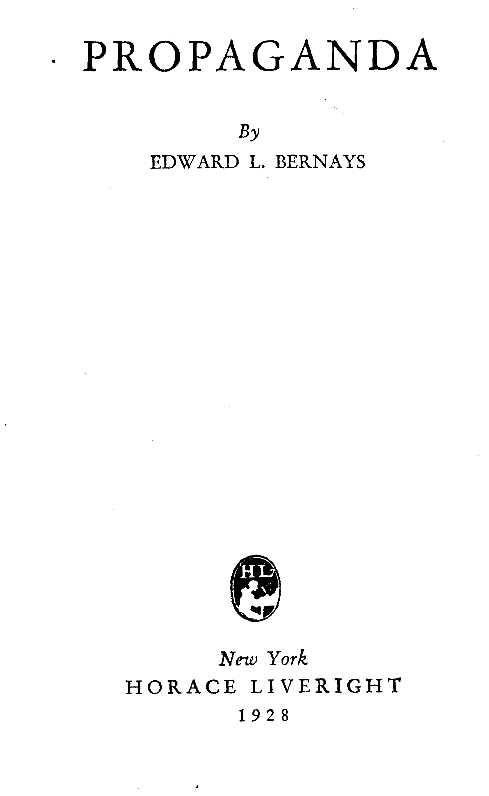Susan Buck-Morss: The Dialectics of Seeing: Walter Benjamin and the Arcades Project (1989–) [English, Spanish]
Filed under book | Tags: · 1800s, advertising, bourgeoisie, city, commodification, critical theory, cultural criticism, fashion, flaneur, history, literary criticism, literature, paris, photography, poetry

“Walter Benjamin‘s magnum opus was a book he did not live to write. In The Dialectics of Seeing, Susan Buck-Morss offers an inventive reconstruction of the Passagen-Werk, or Arcades Project, as it might have taken form.
Working with Benjamin’s vast files of citations and commentary which contain a myriad of historical details from the dawn of consumer culture, Buck-Morss makes visible the conceptual structure that gives these fragments philosophical coherence. She uses images throughout the book to demonstrate that Benjamin took the debris of mass culture seriously as the source of philosophical truth.
The Paris Arcades that so fascinated Benjamin (as they did the Surrealists whose “materialist metaphysics” he admired) were the prototype, the 19th century ‘ur-form’ of the modern shopping mall. Benjamin’s dialectics of seeing demonstrate how to read these consumer dream houses and so many other material objects of the time—from air balloons to women’s fashions, from Baudelaire’s poetry to Grandville’s cartoons—as anticipations of social utopia and, simultaneously, as clues for a radical political critique.
Buck-Morss plots Benjamin’s intellectual orientation on axes running east and west, north and south—Moscow Paris, Berlin-Naples—and shows how such thinking in coordinates can explain his understanding of ‘dialectics at a standstill’. She argues for the continuing relevance of Benjamin’s insights but then allows a set of “afterimages” to have the last word.”
Publisher MIT Press, 1989
Studies in Contemporary German Social Thought Series
ISBN 0262022680
493 pages
Reviews: Shierry Weber Nicholsen (New German Critique, 1990), Robert Tobin (Phil and Lit, 1991), James L. Gussen (Germanic Review, 1992), Erika Berroth (J Germanic Linguistics, 1994), Beste Alpay (Montréal Review, 2011).
Publisher (EN)
The Dialectics of Seeing: Walter Benjamin and the Arcades Project (English, 22 MB, updated on 2019-12-3)
Dialectica de la mirada: Walter Benjamin y el proyecto de los Pasajes (Spanish, trans. Nora Rabotnikof, 1995, updated on 2013-5-2)
Walter Benjamin: The Arcades Project (1982/1999) [German, English]
Filed under book | Tags: · 1800s, advertising, bourgeoisie, city, commodification, critical theory, cultural criticism, fashion, flaneur, history, literary criticism, literature, paris, photography, poetry

“To great writers,” Walter Benjamin once wrote, “finished works weigh lighter than those fragments on which they labor their entire lives.” Conceived in Paris in 1927 and still in progress when Benjamin fled the Occupation in 1940, The Arcades Project is a monumental ruin, meticulously constructed over the course of thirteen years—“the theater,” as Benjamin called it, “of all my struggles and all my ideas.”
Focusing on the arcades of nineteenth-century Paris—glass-roofed rows of shops that were early centers of consumerism—Benjamin presents a montage of quotations from, and reflections on, hundreds of published sources, arranging them in 36 categories with descriptive rubrics such as “Fashion,” “Boredom,” “Dream City,” “Photography,” “Catacombs,” “Advertising,” “Prostitution,” “Baudelaire,” and “Theory of Progress.” His central preoccupation is what he calls the commodification of things—a process in which he locates the decisive shift to the modern age.
The Arcades Project is Benjamin’s effort to represent and to critique the bourgeois experience of nineteenth-century history, and, in so doing, to liberate the suppressed “true history” that underlay the ideological mask. In the bustling, cluttered arcades, street and interior merge and historical time is broken up into kaleidoscopic distractions and displays of ephemera. Here, at a distance from what is normally meant by “progress,” Benjamin finds the lost time(s) embedded in the spaces of things.
German edition: Gesammelte Schriften, Bd 5: Das Passagen-Werk
Edited by Rolf Tiedemann
Publisher Suhrkamp Verlag, Frankfurt am Main, 1982
ISBN 3518285351
1354 pages
English edition
Translated by Howard Eiland and Kevin McLaughlin
Publisher The Belknap Press of Harvard University Press, Cambridge/MA and London, 1999
ISBN 067404326X, 9780674043268
1073 pages
Das Passagen Werk (German)
The Arcades Project (English)
See also Susan Buck-Morss’ The Dialectics of Seeing: Walter Benjamin and the Arcades Project (1989), and Benjamin at Monoskop (incl. source bibliography).
Comment (1)Edward L. Bernays: Propaganda (1928)
Filed under book | Tags: · advertising, art, business, democracy, education, marketing, politics, propaganda, psychology, public relations, science

A seminal and controversial figure in the history of political thought and public relations, Edward Bernays (1891–1995), pioneered the scientific technique of shaping and manipulating public opinion, which he famously dubbed “engineering of consent.” During World War I, he was an integral part of the U.S. Committee on Public Information (CPI), a powerful propaganda apparatus that was mobilized to package, advertise and sell the war to the American people as one that would “Make the World Safe for Democracy.” The CPI would become the blueprint in which marketing strategies for future wars would be based upon.
Bernays applied the techniques he had learned in the CPI and, incorporating some of the ideas of Walter Lipmann, became an outspoken proponent of propaganda as a tool for democratic and corporate manipulation of the population. His 1928 bombshell Propaganda lays out his eerily prescient vision for using propaganda to regiment the collective mind in a variety of areas, including government, politics, art, science and education. To read this book today is to frightfully comprehend what our contemporary institutions of government and business have become in regards to organized manipulation of the masses.
Publisher Horace Liveright, New York, 1928
159 pages
The Century Of The Self: One: Happiness Machines (documentary film by Adam Curtis featuring Edward Bernays)
PDF (no OCR)
View online (HTML)

